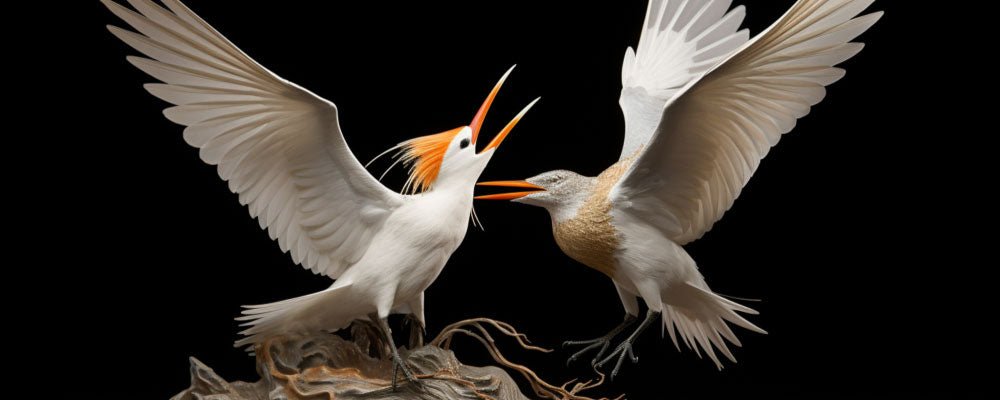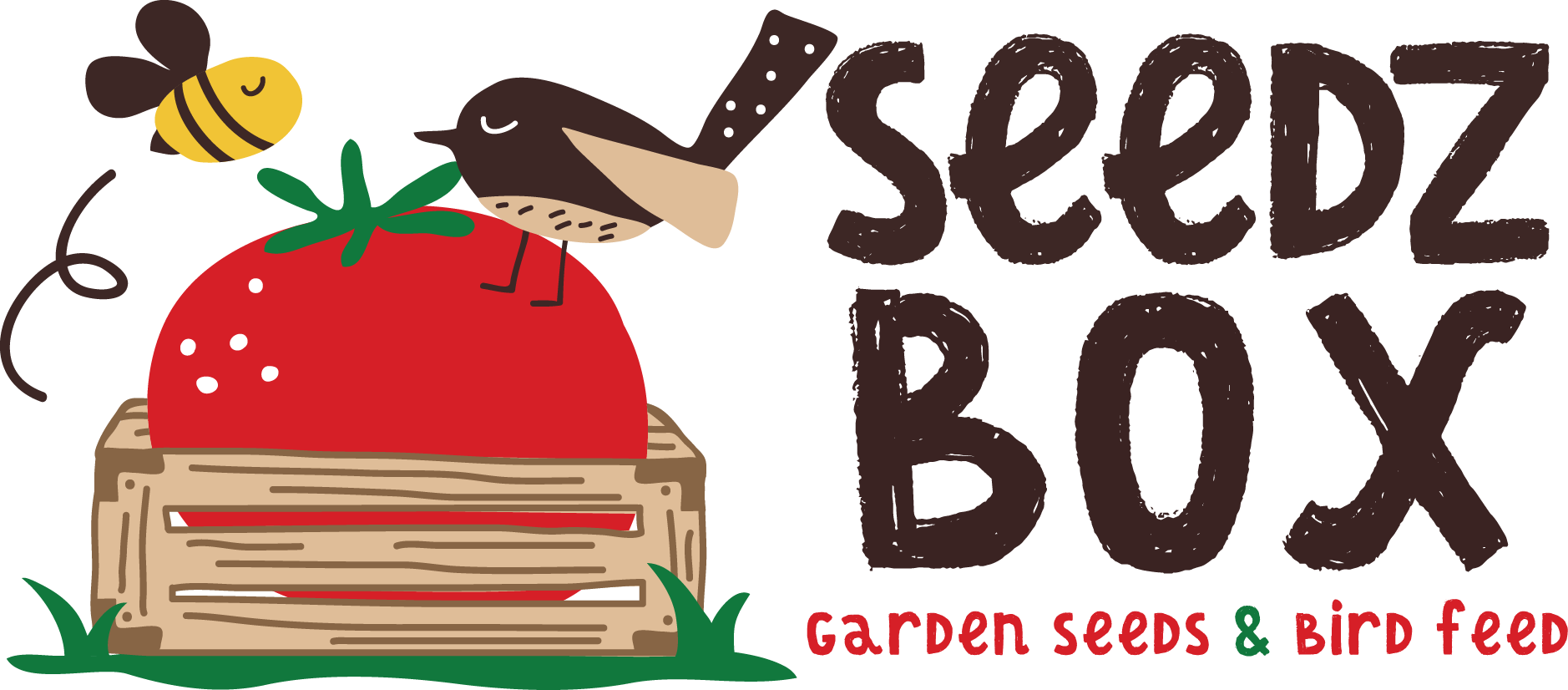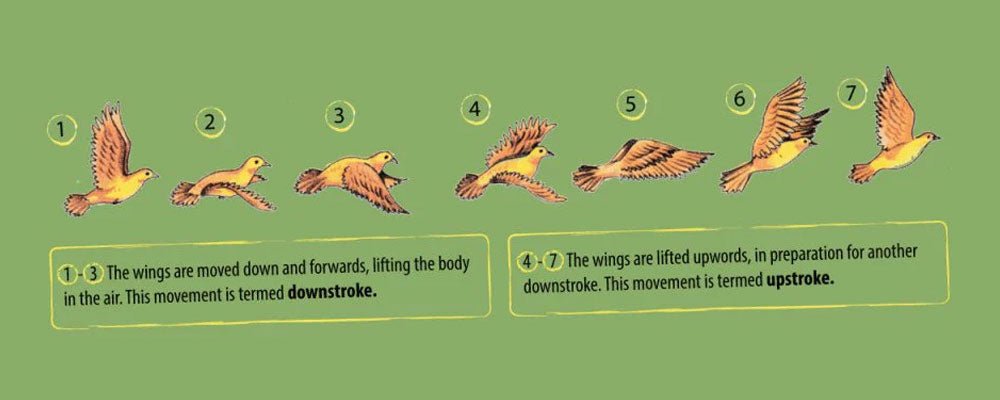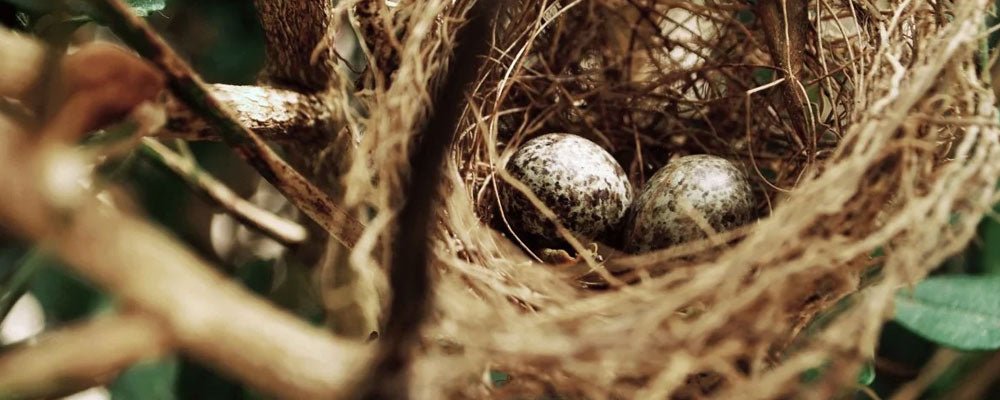
How and why do birds sing & court?
Birdsong is a key element in courtship and pairing, and attract mates. serving to establish territory It is of particular interest to birdwatchers because it helps in species identification. Birds' breeding habits vary greatly. Some species pair up only fleetingly in the breeding season, while others pair for life.
When is the breeding season for birds?
In songbirds, the start of the breeding season generally coincides with the time of abundant food we know as spring. A number of factors trigger the onset of the breeding period.
In temperate areas, as the days start to lengthen in spring, the increase in daylight is detected by the pineal gland in the bird's brain, which starts a complex series of hormonal changes in the body.
Most birds form a bond with a single partner during the breeding season, which is often preceded by an elaborate display by the cock bird.
Why do birds sing? What's the function of birdsong?
Many cock birds announce their presence by their song, which both attracts would-be mates and establishes a claim to a territory. Once pairing has occurred, the male may cease singing, but in some cases he starts to perform a duet with the hen, with each bird singing in turn.
Singing serves to keep members of the pair in touch with each other. In some species, the pair co ordinate their songs so precisely that although the cock bird may sing the first few notes, and then the hen, sounds as if the song is being sung by just one bird. For example, Reed buntings (emberiza schoeniclus) identify their mates by song and also by the different colours of the male and female.
Studies have revealed that young male birds start warbling quite quietly, and then sing more loudly as they mature. Young songbirds know just the basics of their species' song by instinct. As they mature, they refine their singing by copying the songs of the adults around them. When their song pattern becomes fixed, it remains constant throughout the bird's life. However, it must be noted that recent studies have shown that, over the course of several generations, the pattern of songs produced by individuals can alter markedly.
Other birds may sing in unison. In a few species it may even be possible for experts to tell the length of time that the pair have been together by the degree of harmony in their particular songs. Pigeons, also known as rock doves (columba livia) are sociable birds and often gather to feed in flocks. Pigeons exhibit a type of courtship behaviour known as kissing, which is linked to ritualized feeding. Similarly.
Ritualized feeding also plays an important role in the courtship behaviour of European robins (Erithacus rubecula) un which the male offers the female food items such as earthworms to prove he is a suitable partner and feeds the hen during nest-building and while she incubates the eggs on the nest.
It is obviously possible to identify different species by differences in their song patterns. However, there are sometimes marked variations between the songs of individuals of the same species that live in different places. In fact. For example, chiffchaffs (phylloscopus collybita) from neighbouring valleys separated by hills or mountains, have local dialects depending on their locality.
Song complexity also varies greatly among types of garden birds. Species such as the cuckoo seem content to repeat a single phrase with very little variation that human ears can detect. In contrast, birds such as thrushes and robins, have several hundred different phrases in their repertoire. These phrases are combined in myriad different ways to produce a song which is constantly changing.
How do birds sing?
Birds produce their sounds without the benefit of a larynx and vocal cords like humans. Instead bird song is created in a voice organ called the syrinx, which is located in the bird's throat, at the bottom of the windpipe, or trachea.
The structure of the syrinx is very variable, being at its most highly developed in the case of songbirds, which possess as many as nine pairs of separate muscles to control the vocal output. As in the human larynx, it is the movement of air through the syrinx that enables the membranes here to vibrate, creating sound as the bird exhales.
The pitch of notes is controlled by rings of cartilage that tighten or loosen to vary the sounds produced. An organ called the interclavicular air sac also plays an important role in sound production, and birds cannot sing without it.
The distance over which bird calls can travel is remarkable - up to 3 miles in some cases, such as the bittern (botaurus stellaris), which has a particularly deep, penetrating song. High, shrill notes can also carry long distances in the case of wrens, which can produce a very loud song relative to their small size.
How do birds court?
Many birds rely on their breeding finery to attract their mates. The bright or bold colours of male birds are designed to warn off rival males and attract the females.
Thus it is usually the female that selects her mate. She bases her choice not only on her potential mate's appearance but also on his singing talents, and in some cases, on his ability to demonstrate nest-building or food-providing skills.
For example, male kingfishers present their mates with fish to vouchsafe their ability to provide food for their young, while male robins may proffer worms.
Some types of birds, though not generally garden birds, assemble in communal display areas known as leks, where hens witness the males' displays and select a mate. A number of different
species, including some game birds and also hummingbirds, establish leks. In a few species, such as the bowerbirds of Australia, the male constructs elaborate bowers of grass that he decorates with items of a particular colour, such as blue, varying from flowers to pieces of glass.
Many male and female birds form no lasting relationship, although the pair bond may be strong during the nesting period. It is usually only in potentially long-lived species, for example, storks and swans, that a lifelong pair bond is formed.
Pair bonding in long-lived species has certain advantages. The young of such birds are usually slow to mature, and are therefore often unlikely to nest themselves for five years or even more. By remaining for a period in a family group, the adults can improve the long-term survival prospects of their young.



Leave a comment
This site is protected by reCAPTCHA and the Google Privacy Policy and Terms of Service apply.